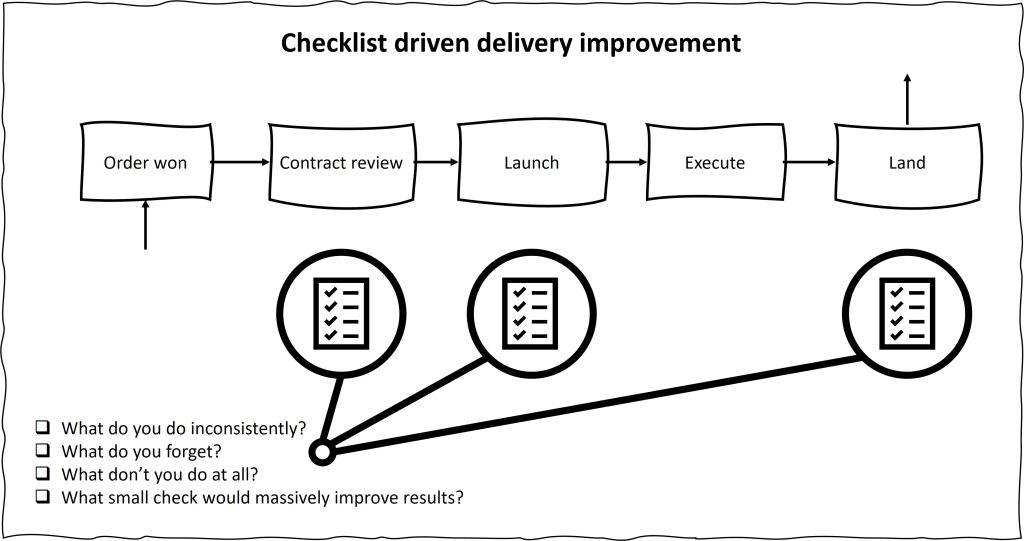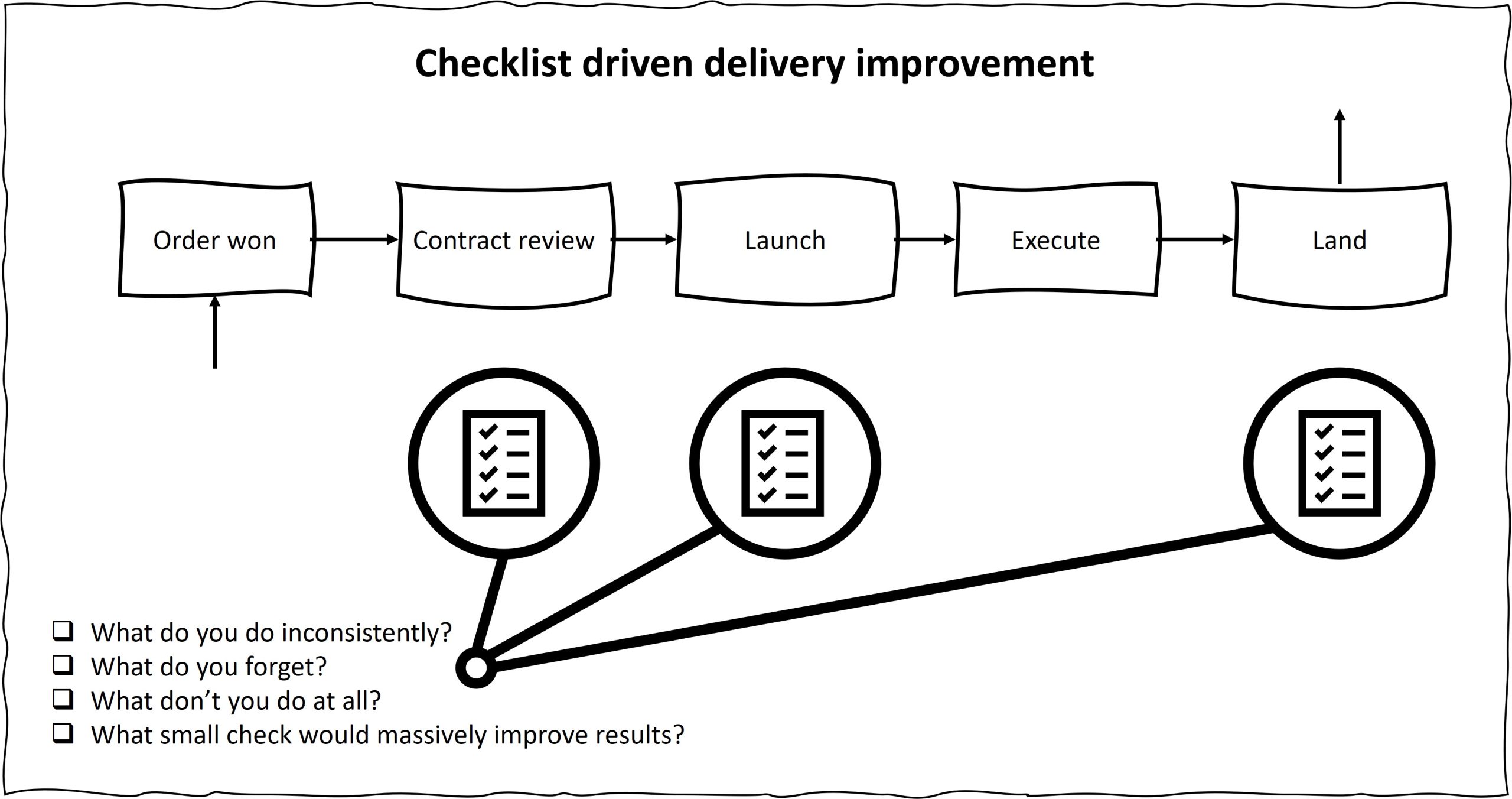Delivering on time can really focus an individual, and a team. Sometimes we can become too engaged with this challenge and we forget to deal with some of the basics.
This articles’ intention is to review three areas that can make a difference to delivering on time. It should also help with improving customer satisfaction too.
What are the three areas?
The three areas that stand out, time and time again, are:
- The contract review
- The launch
- The landing
These are usually simple to fix and I’ll offer some ideas around each.
Before I go any further, however, let me remind you of some of the benefits of higher on time delivery:
- Winning additional business.
- Being able to re-direct your energies, away from fire fighting and towards strategy and continuous improvement.
- Removing the frustrations of your team.
- Increasing profit margins.
Dealing with the challenge of systematic, high and consistent on time delivery is worth the time and effort.

The contract review
The contract review, for many businesses with a delivery issue, can often be undefined or not followed. By delivery issue, I am referring to any business that has to use ‘blood, sweat and tears’ to achieve even a half-way decent delivery performance.
When I refer to the contract review, I am not just referring to the contract’s terms and conditions, although included. I want your team to know about any unusual deliverables. I want them to know about their business’ constraints, so they can confirm delivery dates. I want them to know about the supply chain for this piece of work, any service requirements and the expectations of the customer.
The contract review is an opportunity to make sure we can deliver what the customer has placed and order for, from every angle.
A simple strategy to deal with the contract review is to create a checklist. If you don’t already have one, brainstorm with your team:
- What items keep tripping you up when it comes to delivery?
- What are your weak points regarding delivery?
- What information does everyone need, to contribute to on time delivery?
The launch
Now that you know all of the details of the contract, what happens next?
There is usually some preparation required before you start, skipping this is not an option for consistently high on time delivery performance.
The challenge at this stage is to prevent your team from starting early. If you think of any of the space vehicle launches you may have seen, can you recall the series of checks they perform? They carry out a ‘go / no go’ routine. They ensure that each function of mission control is satisfied prior to the final countdown. Can you imagine them not doing this?
We usually don’t need anything quite so detailed as this, but we probably need something. What are the handful of checks and balances that would serve your business, to help make sure your contract is launched correctly?
Again, brainstorming a checklist with your team is helpful here:
- What tasks need to have been completed prior to starting?
- What preparations and notifications need to have been completed at this point?
- What do you normally trip yourself up with during contract delivery, that you want to avoid?
It doesn’t need to be a long list, just long enough to ensure that you are ready to go with the delivery.
The landing
This article assumes that your controls for executing your contract are fine. For many organisations that I have worked with, this hasn’t been the issue. Businesses are often setup because the founders / owners know this bit inside and out.
So, what about the final completion, the landing, of the contract?
Being clear about what needs to happen, to fully complete the contract is key. Again, brainstorming a list with your team can help define this:
- Are there any final quality checks required?
- What paperwork is needed?
- Are there any delivery requirements that need to be planned for?
- Have we done the preparation we need, so the finale isn’t a mad scramble?
- Are we clear on the deliverables the customer is expecting?
Again, it doesn’t need to be a long list, just long enough!
Bringing this all together
There are more ways to skin this particular cat than checklists. I offer this approach to get your mind whirring to see what would work for you.
However you choose to tackle this subject, nothing makes these three checkpoints work better than a well defined routine. If you have an existing routine, see if you can piggy back these items onto existing meetings / routine tasks.
If you don’t have a routine meeting that you could use this for then it might be time to consider how you can make this into a routine.
Visual management boards such as Kamishibai boards are great for this. This simple red/green T-card system is low cost to implement and makes the management of routine tasks easier.
Or, perhaps it is time to instil a Sunrise meeting. This short process driven meeting approach is another great way to ensure that routine tasks happen like clockwork. Routine days can lead to successful weeks, months and years. This is especially true when it comes to on time delivery, profits and happy customers.
I hope that you have found this article useful and that you have some ideas you can take back into your organisation to make delivering on time less stressful and more consistent.



